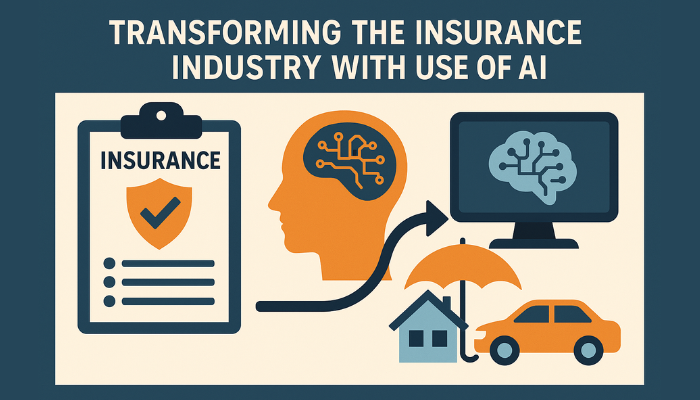Energy decisions today aren’t just about cost and supply, they’re about making smart choices. If you’re handling operations, managing budgets, or focused on hitting sustainability targets, you’ve probably noticed how quickly AI energy tools are changing the game.
Artificial Intelligence (AI) can predict energy needs, automate grid systems, and help cut down waste, making your business more efficient and ready for the future. Still, there’s a downside: the more you use AI, the more power it needs. That’s why finding the right balance between using AI and managing energy demand is so important.
In this blog, you’ll explore how AI energy is shaping the industry, from what AI means in the energy sector to how it helps optimize usage across operations. You’ll see how AI is also driving global energy demand, and the key challenges you need to watch for.
What is AI in the Energy Industry?
Artificial intelligence in the energy industry is creating a major shift in how energy is produced, managed, and consumed by users. It uses smart algorithms and Machine Learning (ML) to process large volumes of data from sensors, equipment, weather updates, and market trends, turning that information into clear, actionable insights. This helps you make faster and more accurate decisions.
For business leaders and CFOs, AI is more than just a technology upgrade. It is a valuable tool that reduces energy waste, lowers operational costs, improves efficiency, and supports sustainability goals, all while helping your business stay competitive in a fast-changing, data-driven world.
Also Read: AI Software Tools and Use Cases in 2025
With a clear explanation of how AI fits into the energy space, let’s look at the real value it brings, especially when it comes to optimizing energy use.
How AI Helps Optimize Energy Use
When you’re running an energy business, every decision about demand, generation, distribution, and operations impacts your bottom line and grid performance.
AI helps you make smarter choices by turning complex data into real-time actions, reducing manual work, and improving efficiency across your operations. Here is how you can use AI to get measurable results across your entire energy value chain:
1. Forecast Demand More Accurately
AI helps you take control of your energy costs by predicting exactly how much energy you need and when you need it. This makes your energy planning more precise and cost-effective.
- Predicting Energy Needs: AI studies weather changes, occupancy trends, production schedules, and market activity to forecast your energy use hour by hour. This helps you avoid peak-time pricing and improves your ability to negotiate better energy contracts.
- Automated Market Trading: AI can buy or sell energy on wholesale markets at the right time, automatically locking in low prices or participating in demand response programs to turn your energy savings into new revenue.
2. Run Grid Operations More Efficiently
AI helps your grid respond faster to changing conditions, without waiting for manual input or scheduled adjustments.
- Automate Load Balancing: AI connects with your control systems and sensors to make real-time adjustments, fine-tuning distribution, switching energy sources, or adjusting voltage to match demand instantly.
- Manage Distributed Energy Resources (DERs): Whether you’re integrating solar, wind, batteries, or backup generators, AI helps you coordinate when and how to feed energy back into the grid, keeping everything stable and efficient.
3. Get More Value from Renewable Energy
When you invest in clean energy infrastructure, AI helps you operate it more intelligently.
- Use Weather-Based Controls: AI relies on hyper-local forecasts to adjust solar and wind output, helping you reduce curtailment and improve grid reliability even when weather conditions change suddenly.
- Improve Battery Efficiency: AI tells you the best times to charge or discharge storage systems based on demand, pricing, and grid load, so you can save on peak-hour costs or sell power back to the grid at the right moment.
4. Prevent Equipment Downtime
AI gives you deep visibility into your critical infrastructure, helping you avoid disruptions and manage assets more cost-effectively.
- Monitor Asset Health Continuously: AI tracks sensor data like vibration, temperature, and operating hours to detect early warning signs of failures, so you can fix issues before they turn into major problems.
- Schedule Maintenance at the Right Time: Instead of using fixed schedules, AI recommends maintenance when your equipment actually needs it. This saves you money and extends the life of your assets.
5. Catch Errors and Cut Costs Faster
Managing your energy costs gets easier when AI helps you spot issues early and take action before they impact your finances.
- Check Bills Automatically: AI scans your utility bills, vendor invoices, and supply contracts for overcharges, missed discounts, or billing errors, freeing your finance team from manual audits.
- Get Alerts for Anomalies: If your system suddenly uses more power than expected, AI sends an alert right away, so you can investigate leaks, faults, or inefficiencies immediately.
6. Simplify Environmental, Social, and Governance (ESG) Reporting and Compliance
If you’re focused on sustainability and compliance, AI can reduce the time and effort it takes to meet regulatory and investor requirements.
- Automate Data Collection: AI gathers energy consumption and emissions data from all your locations and formats it to meet ESG and regulatory standards like the EPA, SEC, or internal CSR goals.
- Test Scenarios Before You Invest: Want to know how a new solar project or battery upgrade will affect your emissions or costs? AI lets you simulate changes and compare options before making long-term commitments.
7. Manage Multiple Sites with Ease
If you operate in multiple locations or manage a wide energy network, AI gives you one platform to monitor and optimize it all.
- Smarter Infrastructure Controls: AI learns how your systems behave, like when equipment runs, how often spaces are used, and where energy peaks happen and adjusts operations automatically.
- Compare and Optimize Across Locations: You get a unified view of energy usage, performance, and costs across every site you manage, helping you reduce inefficiencies and scale savings faster.
Ready to take control of your energy operations with AI?
Contact the Codewave team today to explore custom solutions tailored to your business goals.
While AI is helping businesses like yours use energy more efficiently, it’s also driving a major rise in global energy demand. Here is what’s fueling that growth.
How AI’s Growing Energy Demand Affects Your Business Operations
Energy demand is rising fast across the country, and one of the biggest reasons is how businesses are using advanced tech. If you’re investing in smart systems and automation, you’re likely feeling the shift already. Here are the main factors behind this growing energy pressure and what they could mean for your operations.
1. Data Centers Are Using More Power Than Ever
Modern AI systems, including generative AI, predictive analytics, and real-time decision engines, require large amounts of computing power. These processes are typically hosted in large, high-density data centers. Right now, these facilities already account for a noticeable share of the US power grid’s total demand, and that demand is increasing quickly.
- Energy use by data centers in the United States is expected to grow by 20% to 40% by the end of 2025.
- By 2032, data centers could use up to 20% of the country’s total electricity output, compared to around 4% today.
Even if your AI systems are cloud-based and hosted off-site by providers like AWS, Azure, or Google Cloud, the growing demand from these data centers affects overall energy markets. This can raise wholesale electricity prices, create congestion on local power grids, and attract regulatory attention — all of which can increase your operational expenses and risk exposure.
2. Large AI Infrastructure Investments
To keep up with the growing demand for AI services, major technology companies are investing heavily in building new data centers and supporting infrastructure. For example, Google alone plans to spend over $75 billion on AI data centers and infrastructure in 2025.
This massive growth is forcing utilities to quickly expand both renewable and conventional power generation to avoid capacity shortages.
Key consequences to watch:
- Electricity prices could increase sharply in regions with a high concentration of data centers.
- In AI-heavy markets like Virginia, Texas, and Arizona, energy rates could rise by up to 8.6% by 2026.
If your operations are located in these regions, or if you rely heavily on cloud-hosted services based there, you could face higher energy costs and power supply challenges, especially during peak demand periods.
4. Environmental and Grid Strain
Many businesses today have set sustainability goals and are working to track and reduce their carbon emissions. These often include Scope 1, 2, and 3 emissions, which cover both direct emissions and those from suppliers and cloud providers.
However, AI’s rapidly growing energy consumption, particularly when supplied by fossil-fuel-based power plants, poses a risk to those decarbonisation efforts.
- US carbon emissions could increase by 5.5% by 2030 due to rising AI-related energy demands.
- Regions already struggling with grid decarbonisation may face greater difficulty meeting emissions targets.
If your ESG reporting includes Scope 3 emissions from data center providers or cloud platforms, the unchecked growth of AI could lead to a noticeable increase in your reported carbon footprint. To manage this, businesses may need to renegotiate power purchase agreements (PPAs), expand renewable energy sourcing, and adopt AI workload management strategies to minimise unnecessary energy consumption.
5. AI Energy Efficiency Improvements
Although AI hardware and software providers are actively working to improve energy efficiency using techniques like model quantisation, adaptive workload scaling, and liquid cooling systems, the overall growth of AI is outpacing these efficiency gains.
- The increasing number of real-time AI applications, generative AI models, and edge AI deployments is driving up the total number of operations, data transfers, and storage needs.
- This trend is keeping overall energy demand on a steady upward trajectory, with no sign of levelling off in the near term.
It’s important to start including AI-related energy consumption forecasts in your long-term procurement, infrastructure, and data strategy plans. The earlier you quantify this exposure, the better positioned your business will be to negotiate future power rates, secure clean energy options, and adjust operational strategies to manage both costs and sustainability performance.
Facing rising AI-driven energy costs and infrastructure strain?
Book a personalized demo to see how Codewave designs custom AI-powered software, systems, and apps that optimize your operations, manage energy consumption, and support your long-term growth and ESG goals.
Also Read: Steps for a Successful AI Implementation Strategy in Your Business
While AI opens up powerful opportunities, its growing energy needs are also creating new pressures on infrastructure, costs, and sustainability goals. Let’s take a closer look at the major challenges you might face and how to overcome them.
Challenges of AI in the Energy Sector
As you scale AI across your operations, it is important to recognize the new pressures it places on energy systems. From rising power costs to infrastructure stress, these challenges can affect both your bottom line and sustainability goals. Here are some of the key challenges you should know about as a decision-maker in the energy industry, along with smart ways to address them using AI.
1. AI’s Energy Consumption Is Accelerating
High-performance AI systems, such as those running real-time analytics, forecasting, and edge computing for smart grids, draw enormous power, placing stress on your infrastructure and inflating operational costs.
Solution:
Deploy AI-powered orchestration platforms to optimize compute scheduling, predict peak demands, and manage internal power distribution intelligently.. For grid-scale AI operations, you can also layer in demand-side response systems that stabilize network loads while generating new revenue streams.
2. Clean Energy Capacity Isn’t Scaling Fast Enough
As AI-related loads increase, the availability of renewable sources like solar and wind often lags behind, constrained by land use, project timelines, or policy hurdles.
Solution:
Expand your portfolio to include stable and scalable alternatives such as green hydrogen, geothermal, or advanced nuclear. Use AI for resource mix optimization and scenario modeling to align your energy sourcing strategy with real-world constraints and long-term sustainability goals. Collaborate with public-private programs to fast-track approvals and gain access to clean energy incentives.
3. Grid Complexity Is Becoming a Barrier
With more Distributed Energy Resources (DERs), from EV chargers to microgrids and storage systems, grid behavior becomes harder to predict and control, raising the risk of imbalances and inefficiencies.
Solution:
Deploy AI-powered grid orchestration tools. These systems continuously analyze grid-wide telemetry, generation patterns, and external factors like weather to manage load distribution, enable DER integration, and reduce curtailment. This results in a more adaptive and resilient grid.
4. Forecasting and Demand Planning Are No Longer Linear
Traditional models can’t keep up with today’s load variability. AI systems drive unpredictable patterns across manufacturing, data centers, and edge devices, making accurate demand forecasting harder than ever.
Solution:
Adopt machine learning-based forecasting platforms that process real-time data, market signals, and macroeconomic indicators to generate highly granular projections. These tools support day-ahead and intra-day planning, reduce energy imbalance costs, and help you structure smarter energy contracts or PPAs (Power Purchase Agreements).
5. High Upfront Investment and Evolving Compliance Requirements
Scaling AI requires a large capital outlay, both in digital infrastructure and energy system upgrades. Meanwhile, shifting ESG and regulatory mandates add operational complexity.
Solution:
Begin with ROI-focused pilot programs in high-impact areas like grid reliability or emissions monitoring. You can use AI to track compliance metrics in real time. Partner with advisors or software providers who understand FERC/NERC guidelines and can design scalable, secure digital frameworks tailored to utility-grade systems.
6. Cybersecurity Threats Are Escalating
As your systems become more digitized and AI-integrated, they also become more exposed, posing threats not only to operations, but also to customer trust and regulatory standing.
Solution:
Embed AI-driven security protocols across every layer, from substations to software layers. Real-time threat detection, anomaly scoring, and automated response systems can help mitigate risk. Make cybersecurity part of your AI strategy from day one, and ensure your teams are trained on emerging digital risks.
Also Read: AI for Data Analysis: Benefits and Future Trends
While these challenges may seem complex, the right technology partner can make all the difference. That’s where Codewave comes in, helping you turn AI potential into real, measurable impact across your energy operations.
How Codewave Helps You Use AI in Energy Operations?
When it comes to using AI in the energy sector, Codewave makes the journey simple, smart, and scalable. Whether you’re looking to cut waste, improve operational performance, or build sustainable, future-ready systems, Codewave helps you turn data into action through custom-built software, AI systems, and applications tailored to your business.
Here is how Codewave supports your energy transformation:
1. Real-Time Energy Monitoring and Analytics
We develop AI-powered platforms and dashboards that integrate with your existing sensors, IoT devices, and operational systems, giving you instant visibility into energy performance across your sites. This helps reduce waste, cut costs, and accelerate sustainability targets.
2. Smart Grid and Infrastructure Optimization
Our AI systems help manage local energy sources like solar, wind, or waste-to-energy plants by balancing supply and demand in real-time. This improves operational stability, even when generation conditions fluctuate.
3. Automation of Power Generation and Distribution
We design AI-led software solutions that automate complex energy processes from power plant operations to large-scale grid management, reducing manual work, increasing system reliability, and lowering operational costs.
4. Predictive Maintenance for Energy Assets
Our AI models analyze equipment performance and usage patterns to predict potential failures before they happen. We build custom maintenance and asset health tracking applications, helping you prevent downtime and extend asset life.
5. Custom Apps for Energy Usage and Behavior Tracking
Codewave creates mobile and web applications for both enterprise users and customers, enabling smarter energy decisions. These apps track consumption patterns, suggest optimisation opportunities, and improve operational awareness.
6. Support for Circular Economy and Renewable Projects
We help businesses manage clean energy projects and circular economy systems with AI, blockchain, and automation tools. From energy credit tracking to smart waste-to-energy management systems, we build the custom platforms you need to innovate sustainably.
7. Scalable, Secure AI Solutions Built Around Your Business
Every solution we build is designed to scale with your business. Our systems are modular, secure, and future-ready, integrating seamlessly into your existing infrastructure while supporting new growth and operational goals.
Need a tech partner who understands both energy and AI?
Codewave is built to help you lead the future of energy, one smart solution at a time. Reach out today without delay!
Codewave is a UX first design thinking & digital transformation services company, designing & engineering innovative mobile apps, cloud, & edge solutions.







